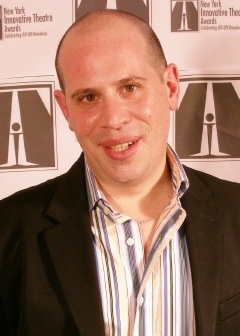Provincetown Playhouse History, I
Things are moving along swimmingly in the fight to cure NYU's addiction to demolition -- to stop John Sexton, the President, and Alicia Hurley, one of the VPs, from hurling a wrecking ball at the Provincetown Playhouse. The email and phone call campaign has been continuing, and we know they have been overwhelmed by the response, which, in their case, probably only firms up their resolve. A meeting was held on Tuesday that plots around a good deal of the rest of our strategy, and there's one part of that strategy that's happening today, involving me, but I can't discuss it until tomorrow.
Anyway, because the alarm bells are ringing in every corner of our world about this, I've made the acquaintance of a theatre historian named Gail Cohen. Gail, who lives in Florida, is a real spitfire -- she has more energy than I do! And she's been providing me with lots of information on the history of the Provincetown Playhouse. I've decided to post a lot of it here. Sometimes when I post stuff, I'll go in and fix typographical errors, but because Gail's history is so wide-ranging (and because I bet you $50 she types fast, too), I'm just posting as it is. Amazing stuff.
Sphere: Related Content...It is NYU School of Law that did not protect the historic dome on the stage of the Provincetown Playhouse when the theatre was renovated. It collapsed. The contractors should have protected it, but obviously the school did not care. The done was built by George Cram Cook who is being honored in Delphi where he is buried soon. The building had been a stable. On one of the existing hitching rings, John Reed etched HERE PEGASUS WAS HITCHED. It is true that the facade is different today than the original one that housed the Provincetown Players. The photo of the proposed one is difficult to see, but it doesn't look to me like the original one. The theatre auditorium though I believe is the same minus that important dome. When Doyle Warren's group was there, an actress told me that touching the dome before going on stage gave her strength. The plaque commemorating George Cram (Jig) Cook at the Provincetown Playhouse, Susan Glaspell had melted down for the war effort during WWII. "The Light may go out forever," she wrote to Jasper Deeter at Hedgerow.
As for the NYU history write up. The Provincetown Players revolutionized American Theatre. It started a complete change from the melodrama's of the 1800's. As Norma Millay said, "We were There, and that's what we were For," referring to O'Neill always being cited when the Provincetown Players are mentioned. What NYU and others constantly fail on is the reason for the end of the Provincetown Players. It was not a conflict between O'Neill and Cook - or strife even though Glaspell aludes to this. The reason was simply that they chose to move uptown with THE EMPEROR - JONES which detracted from, and scattered their energy and resources for the base theatre on MacDougal Street. Jasper would roller skate from MacDougal Street to the theatre uptown and back. He originated the role of Smithers, and was responsible for finding Charles Gilpin to act in the main role. Jasper also recommended Dudley Diggs for the film instead of playing the role himself.The Provincetown Players also toured the play. In Chicago, the cast received 20 curtain calls. Bert Williams came up to Gilpin with tears rolling down his face saying that he waited all his life to see a Negro in a major dramatic role. There is an extensive history of African-Americans at the Provincetown Playhouse, including Paul Robeson, Rose McClendon, Jules Bledsoe, and the major African-American actors of the time. Rose McClendon played over 30 roles on Broadway before she died in 1936. Countee Cullen had just written a play for her to premiere in at Hedgerow before her death. Otto Kahn was the main source of funding for the Provincetown Players. Charlie Chaplin also contributed, and performed at the Provincetown Playhouse.
George Cram Cook and Susan Glaspell left for Greece in 1922. "We give this theatre we love a good death. The Provincetown Players end their story here." They made the others who stayed take a new name, The Experimental Theatre Inc. at the Provincetown Playhouse. James (Jimmy) Light was the director, but the group running the theatre was Eugene O'Neill, Kenneth MacGowan, and Robert Edmond Jones. Eleanor Fitzgerald, and Edna Kenton help run the theatre as they always had. Their papers are in Special Collections at the NYU Library. Cleon Throckmorton, and others were on the Board. Another season was planned for the Garrick Theatre. I have that final fundraising program from 1929. It lists all of the plays, and people who had been associated with the Provincetown Players, and the Experimental Theatre Inc. It lists the Board Members, reviews, quotes about the Provincetown Players, and the proposed new season that never happened. This program belonged to Jasper Deeter. I sold the other one to the O'Neill Center. Maybe NYU would like to buy it from me...
The theatre was also owned by Al and Sarah Maissel, and Norman Buckbinder. Sarah taught art at Cheltenham High School in Elkins Park, PA. Norman Buckbinder knew Norma Millay, and had great feeling for the Provincetown Playhouse - which is interesting because I also yelled at him a lot during the years. At one point Signature Theatre was considering moving to the Provincetown Playhouse. Let me end this with the words of George Cram Cook that were on the plaque honoring him at the Provincetown Playhouse:
And we will make the cold world
Flame and music,
The dance of flame
Obedient to dream

No comments:
Post a Comment